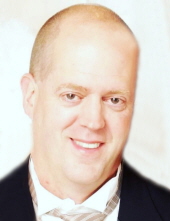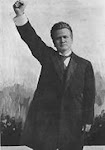Public education in Wisconsin should provide high quality learning for ALL children no matter who they are or where they live,” Eau Claire School Board President Chris Hambuch-Boyle recently told me.
Chris and education leaders
across the state read with interest details of the Governor’s plan for our next
state budget. Governor Walker gave money to a number of new initiatives and
reaped the praise of some education leaders.
The plan picks and chooses among
various proposals advanced over the last few years. Some new programs are
funded and some existing programs get more money. The plan is a compromise.
However – as with any political
compromise – we should know what is not included and what is not being done.
We fund schools primarily through
a school aid formula. Its purpose is to “equalize” resources in school
districts across Wisconsin so regardless of where a child lives in the state,
the opportunities for learning will be relatively equal.
The equalized aid formula is
broken. A number of plans were proposed to fix the formula including ideas I
supported. But the Governor’s new plan does nothing to fix the formula.
Rather, most of the new money in
the Governor’s plan gives the same dollars to property-rich districts as to
property-poor districts.
This is a new direction for our
state.
Since 1973, governors have
supported sending money for schools through the equalized aid formula. The
policy of both parties was to see that every Wisconsin child had the same
benefit of equal opportunity for a sound education.
Board President Hambuch-Boyle
expressed concerns that the Governor’s plan “Makes the inequity worse. Under
the guise of ‘here’s some more money’ he extends the inequity.”
Consequently, children in
property-rich schools have a better opportunity than children living in a
property-poor district. School districts across state would be better served if
the additional dollars recommended by the Governor were distributed through an
improved equalized aid formula. Children would be better served if school
leaders knew they could count on a steady partnership from the state.
President Hambuch-Boyle and many
others across the state are working very hard to re-imagine public education
for 21st Century students. Leaders in western Wisconsin encouraged legislators
to learn about innovations. During a recent visit to an Eau Claire Middle
School, I saw evidence of a new world in our public schools.
What do we want from our
education system for our children? We want a place for our children to learn,
to develop cognitive and social skills. We need our children to develop
character and become responsible citizens. But we also want our children to
find their passion and purpose.
Tony Wagner and Ted Dintersmith
write in their book, Most Likely to Succeed, that students need to tackle the
challenge of how to “leverage your passion and talents to make the world
better.”
Most Likely to Succeed is both a
book and a documentary. Local education leaders recently invited legislators to
view the film and talk about changes in our classrooms. The film explores
innovation in education and the possibilities for the 21st century school.
After viewing the film and visiting the ARCTIC Zone classroom at Eau Claire’s
Northstar Middle School, I am beginning to see the future of education.
“The world no longer cares how
much you know, because Google knows everything. What the world cares about -
what matters for learning, work and citizenship – is what you can do with what
you know,” write Wagner & Dintersmith. Students need to learn in groups by
practicing problem solving and navigating group dynamics.
Critical thinking, communication,
and collaborative problem solving are skills actively taught and evaluated as
part of the school day in pioneering programs. New ways of teaching and
learning means many old ways must change. Resources are needed. Funding
stability is critical.
Wisconsin schools can innovate.
We can provide high quality opportunities for our children that live in Beloit,
Black River Falls, Brookfield or Bruce.
To get there, school leaders must
be confident they don’t have to worry about deep cuts in the next budget and we
must fix the current school funding formula. This commitment is necessary to
provide an equal opportunity education to every child.














No comments:
Post a Comment